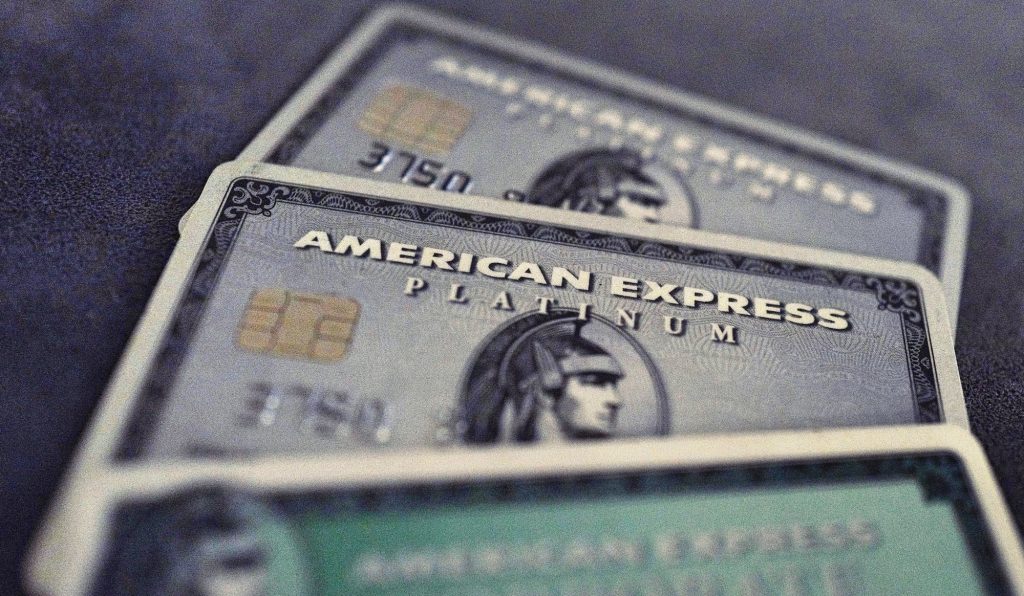This post is about how American Express makes money. Firstly, we explain the key elements of American Express business model. Then, we explain how American Express operating model is different from that of Visa or MasterCard. Then, we provide information on American Express four business segments and their revenues and revenue share for FY 2014 (fiscal year ending December 2014). Finally, we share the revenues, the profits, and the profit margins of American Express for FY 2014.
About American Express
American Express is a leading global payments and travel company. The company offers charge and credit payment card products and travel-related services to consumers and businesses worldwide. The company was founded in 1850.

Key Elements of American Express Business Model
American Express serves a diverse set of customer groups, including consumers, small businesses, mid-sized companies, and large corporations. American Express serves a two-sided market and enables the interactions between two distinct types of customers, with the card members on one side and the merchants on the other side.
To consumers and small businesses, the company offers a variety of charge and credit card products, co brand cards, stored value/prepaid cards, and travel-related services.
- Charge cards represent cards that generally carry no pre-set spending limits and are primarily designed as a method of payment and not as a means of financing purchases. Charge card members generally must pay the full amount billed each month.
- Credit cards represent cards that have a range of revolving payment terms, grace periods, and rate and fee structures.
- Cobrand cards, issued under cobrand agreements with selected commercial firms, help card members earn rewards provided by the partners’ respective loyalty programs, such as frequent flyer miles, hotel loyalty points, and cash back.
- Prepaid cards represent payment cards that are pre-loaded with value that can be used at a later time.
- Travel services include premium leisure travel and lifestyle-related services that are provided through the company’s proprietary network of travel and lifestyle consultants, consumer travel websites, and travel representative network.
The company sells these products and services through various channels, including direct mail, online applications, in-house and third-party sales forces and direct response advertising.

The company generates revenues from consumers and small businesses primarily through net card fees and travel commissions. Net card fees represent the revenue earned from annual card membership fees. Travel commissions and fees are earned by charging a transaction or management fee to both customers and suppliers for travel-related transactions. The company also earns interest income on outstanding loans.
To merchants, the company offers point-of-sale, marketing and information products and services, servicing and settlement, fraud prevention services, and merchant financing. The company generates discount revenue from merchants. It represents the fees charged to merchants when the card members use their cards to purchase the goods and services from them. The discount fee is generally deducted from the payment to the merchant.
American Express also serves companies and organizations worldwide through its global corporate payments and global business travel (GBT) businesses. The company offers a wide range of expense management services including:
- A comprehensive offering of Corporate Card Programs such as corporate cards, corporate meeting cards, and business travel accounts (BTAs).
- A suite of Business-to-Business (“B2B”) Payment Solutions including corporate purchasing card, vPayment, Buyer-initiated payments (BIP).
Through the GBT JV, the company also offers a variety of business travel-related services to its corporate clients, including: full-service online and offline travel booking and reservation services and support; travel program management services; consulting services; and meetings and events management services.
The following diagram shows the key elements of American Express business model. It shows how the money flows-in from the different customer segments and the key cost elements where the money flows-out to.

American Express Revenues FY 2014 By Revenue Type
Of the total revenues of $34.3 billion in FY’14, American Express generated
- $19.5 billion revenues, 56.8% of the total, from the discount fees.
- $2.7 billion revenues, 7.9% of the total, from net card fees.
- $1.1 billion revenues, 3.3% of the total, from travel commissions and fees.
- $2.5 billion revenues, 7.3% of the total, from other commissions and fees. These include revenue from foreign exchange conversions, card-related fees and assessments, loyalty partner related fees, and other service fees
- $3.0 billion revenues, 8.7% of the total, from other.
- $5.5 billion revenues, 16.0% of the total, as net interest income.
How Is American Express Operating Model Different From VISA Or MasterCard?
American Express operating model is different from that of VISA or MasterCard. American Express has a three-party, closed-loop, spend-centric operating model. VISA and MasterCard have a four-party, open-loop, transaction-centric operating model. The different models are described as follows.
Three-party vs Four-party model
In a four-party model, there are four entities: Cardholder, Merchant, Issuer, and Acquirer. An Issuer is a financial institution that issues a card to a cardholder. An Acquirer is a financial institution that maintains the relationship with a merchant. The payment network sets the rules and manages the information flow between the issuer and the acquirer. VISA and MasterCard operate through a four-party model. They do not issue cards to consumers directly. Instead, they act as intermediary between issuers and acquirers.
In a three-party model, issuer and acquirer are the same entity. American Express issues cards to the consumers and processes the payments from the merchants as well. So, American Express operates through a three-party model. For past several years, American Express has also been partnering with other issuers and acquirers to boost their card circulation and acceptance. But, majority of their revenues continue to come from their proprietary card-issuing and merchant-acquiring business.
Closed-loop vs Open-loop Network
American Express operates a closed-loop payment network, whereas VISA and MasterCard operate an open-loop payment network. In a closed-loop network, payment services are provided directly to the cardholders and merchants by the owner of the network, without involving third party financial institutions intermediaries. On the other hand, open-loop networks are multi-party and operate through a system that connects issuers and acquirers. The network owner manages the information and flow of value between them.

The closed-loop allows American Express to analyze information on card member spending and build algorithms and other analytical tools that enable them to provide targeted marketing and other information services for merchants and special offers and services to card members.
Spend-centric vs Transaction-centric model
American Express follows a “spend-centric” operating model. It focuses on generating revenues primarily by driving spending on its cards through attractive reward programs for card members. This helps them earn discount revenue from merchants. With this model, American Express targets the affluent customers who are likely to spend more. This model focuses on the total amount spent by the customer, rather than the volume of transactions processed.
On the other hand, VISA and MasterCard earn revenue primarily on the volume of transactions carried out through their cards. They follow a “transaction-centric” operating model.
American Express Business Segments
American Express has four reportable operating segments: U.S. Card Services (USCS), International Card Services (ICS), Global Commercial Services (GCS), and Global Network & Merchant Services (GNMS). A brief description of these segments is as follows:
- USCS issues a wide range of card products and services to consumers and small businesses in the U.S., and provides consumer travel services to card Members and other consumers.
- ICS issues proprietary consumer and small business cards outside the U.S. and operates coalition loyalty business in various countries. Coalition loyalty programs enable consumers to collect rewards points from a variety of participating merchants through just one program.
- GCS offers global corporate payment services and global business travel services to large and mid-sized companies. The Company’s business travel operations, which had been included in GCS, were deconsolidated effective June 30, 2014 in connection with the Global Business Travel Joint Venture (GBT JV) transaction.
- GNMS operates a global payments network that processes and settles proprietary and non-proprietary card transactions.
- Global Network Services (GNS) focuses on partnering with select third-party banks and other institutions to issue Cards accepted on American Express global network and/or acquire merchants on its network. GNS arrangements fall into the following three main categories: Independent Operator Arrangements, Network Card License Arrangements and Joint Venture Arrangements.
- Independent Operator (IO) Arrangements. The company pursues these arrangements to expand its presence in countries where they do not offer a proprietary local currency card. The company licenses IO partners to issue local currency cards in their countries. IO partners own the customer relationships and credit risk for the cards they issue. They also serve as the merchant acquirer and processor for local merchants.
- Network Card License (NCL) Arrangements. In a NCL arrangement, the company grants the third-party institution a license to issue American Express branded cards. The NCL issuer owns the customer relationships for all cards it issues, provides customer service to its card members, authorizes transactions, manages billing and credit, is responsible for marketing the cards, and designs card product features. American Express (or an IO partner) operate the merchant network, route and process card transactions from the merchant’s point of sale through submission to the issuer, and settle with issuers.
- Joint Venture (JV) Arrangements. In a JV arrangement, the JV is responsible for the card member credit risk and bears the operating and marketing costs.
- Global Merchant Services (GMS) business builds and maintains relationships with merchants and merchant acquirers and processors, processes card transactions and settles with merchants that choose to accept cards for card purchases.
- Global Network Services (GNS) focuses on partnering with select third-party banks and other institutions to issue Cards accepted on American Express global network and/or acquire merchants on its network. GNS arrangements fall into the following three main categories: Independent Operator Arrangements, Network Card License Arrangements and Joint Venture Arrangements.
Corporate functions and certain other businesses, including its Enterprise Growth Group and other operations, are included in Corporate & Other.

American Express Business Segments Revenues and Revenue Share FY 2014
Of the total revenues of $34.3 billion in FY’14, American Express generated
- $17.9 billion revenues, 52.2% of the total, from the USCS segment.
- $5.5 billion revenues, 16.0% of the total, from the ICS segment.
- $4.9 billion revenues, 14.4% of the total, from the GCS segment.
- $5.7 billion revenues, 16.8% of the total, from the GNMS segment.
- $0.2 billion revenues, 0.6% of the total, from the Corporate and Other segment.
American Express Geographic Segments Revenues and Revenue Share FY 2014
Of the total revenues of $34.3 billion in FY’14, American Express generated
- $24.9 billion revenues, 71.8% of the total, from the U.S.
- $3.8 billion revenues, 10.9% of the total, from the EMEA segment. EMEA represents Europe, the Middle East, and Africa.
- $2.9 billion revenues, 8.5% of the total, from the JAPA segment. JAPA represents Japan, Asia/Pacific, and Australia.
- $2.9 billion revenues, 9.3% of the total, from the LACC segment. LACC represents Latin America, Canada, and the Caribbean.
American Express Profits and Profit Margins FY 2014
Of the $34.3 billion of American Express total revenues in FY’14, $28.8 billion were the non-interest revenues and $5.5 billion was the net interest income. The share of net interest income in the total revenues was 16.0%. American Express total operating expenses and provisions for losses were $25.3 billion. This resulted in $9.0 billion of operating profit and an operating margin of 26.2%. After income taxes and other, American Express had a net profit of $5.9 billion and a net margin of 17.2%.









